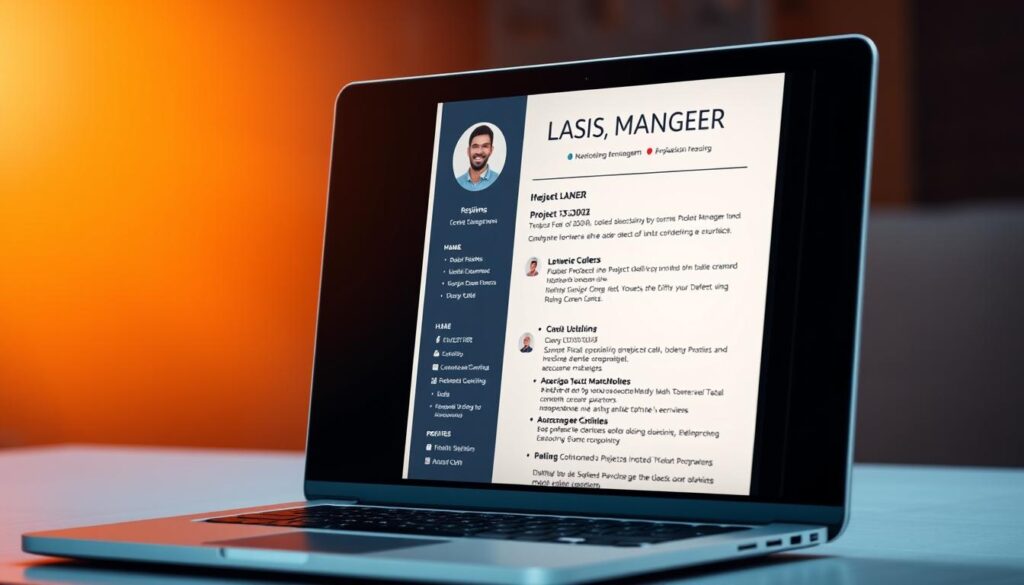What if landing your next role wasn’t about sending more applications—but smarter ones? With 22 million new positions emerging across booming sectors like tech and healthcare, standing out requires more than polished experience. It demands precision tools and fresh tactics.
The global talent gap could cost industries $208 billion, yet hiring managers struggle to find qualified candidates. This disconnect reveals an opportunity: aligning your approach with industry-specific demand forecasts while leveraging automation. Platforms like RoboApply simplify this with AI resume tailoring, ATS optimization, and one-click applications.
You’ll need more than traditional networking. Modern searches require blending human connections with auto-apply Chrome extensions and outreach CRMs. Imagine tracking every submission while an interview coach refines your delivery—all before your first coffee break.
Key Takeaways
- Project management roles will grow 33% in 10 years, creating 22 million opportunities globally
- Unfilled positions could cost $208 billion, making strategic candidates highly valuable
- Tech tools like AI resume builders and grammar checkers boost application quality
- Cross-industry demand spans construction, healthcare, finance, and energy sectors
- Combine traditional networking with automated job trackers for full market coverage
Understanding the Project Management Landscape
Navigating today’s employment terrain requires knowing where growth lives. The field is expanding faster than qualified candidates can fill positions—a gap that’s your strategic advantage.
Where Demand Meets Opportunity
Construction firms need leaders for bridge repairs and smart-city developments. Tech companies seek coordinators for AI deployments and cloud migrations. “Healthcare’s regulatory shifts alone create 14% annual growth in coordination roles,” notes a PMI industry report.
Three sectors dominate hiring forecasts:
- Energy: Renewable initiatives require oversight of solar farm builds
- Finance: Digital payment systems demand implementation experts
- Transportation: EV infrastructure projects need timeline managers
Aligning Your Expertise
Government agencies now hire 23% more professionals for infrastructure bills than last year. Healthcare systems prioritize candidates who’ve handled HIPAA-compliant software rollouts. Tech roles favor those with Scrum certifications and API integration experience.
Customize your tailored resume to mirror these priorities. Highlight permits secured for construction bids or agile frameworks used in tech launches. This specificity turns applications from generic to irresistible.
Remember: 88% of hiring managers prioritize industry-specific achievements over general experience. Your next move starts with matching your skills to sector pain points.
Crafting a Standout Project Manager Resume
Recruiters spend just 7 seconds scanning your document. To survive this speed test, your content must command attention while meeting technical screening requirements. Here’s how to balance human appeal with machine readability.

Optimizing Your Resume for ATS
Applicant tracking systems filter 75% of submissions before human eyes see them. Beat the bots by:
- Mirroring exact phrases from the job description (e.g., “Agile workflow implementation” instead of “project coordination”)
- Using standard headings like “Professional Experience” – creative titles confuse algorithms
- Including industry-specific keywords: “risk mitigation” for construction roles, “sprint planning” for tech positions
Tools like RoboApply’s AI-driven resume builder analyze job posts and automatically adjust your content. Their ATS optimizer flags formatting issues like columns or graphics that might cause parsing errors.
Highlighting Achievements and Certifications
Replace generic duties with measurable wins. Instead of “Managed teams,” try:
“Led 12-member cross-functional team to deliver $2.4M software upgrade 18 days ahead of schedule, achieving 97% user adoption.”
Prioritize certifications in your header or summary. List PMP or PRINCE2 first, followed by niche credentials like Six Sigma. For hybrid roles, pair technical badges (Certified ScrumMaster) with soft-skill endorsements.
Always include percentage improvements, budget figures, and stakeholder numbers. These concrete details prove your capacity to drive results – the ultimate test of leadership potential.
Leveraging RoboApply for Resume and Cover Letter Success
Modern tools redefine how you present qualifications. RoboApply’s AI-driven features streamline document creation while boosting competitiveness in crowded applicant pools.
Intelligent Document Customization
The platform’s builder scans job descriptions to identify critical requirements. It then adjusts your resume’s language to match priorities like “stakeholder alignment” or “budget forecasting.” One user reported landing interviews for 43% more roles after using this feature.
Three core advantages:
- Automatically inserts industry-specific verbs like “orchestrated” or “spearheaded”
- Generates cover letter openings that reference company milestones
- Maintains consistent formatting across 15+ file types
Error Elimination and System Compatibility
RoboApply’s grammar checker flags subtle issues human eyes miss. A recent study found applicants using AI proofreading tools made 78% fewer mistakes.
The ATS optimizer shows how algorithms view your resume. It might suggest:
- Replacing icons with plain-text section headers
- Standardizing date formats for better parsing
- Increasing keyword density without overstuffing
For those targeting multiple industries, the platform’s HR leadership resume templates provide adaptable frameworks. One construction professional used this to efficiently apply for roles in renewable energy and urban development simultaneously.
project manager job search strategies for success
Precision targeting transforms job hunting from a numbers game to a strategic pursuit. Identify positions where your expertise solves immediate organizational needs, then craft applications that demonstrate exact alignment.

Mapping Specializations to Market Needs
Construction coordinators must showcase permit acquisition and OSHA compliance. Tech-focused professionals highlight sprint planning and API integrations. Review these specialization benchmarks:
- Agile: Certified ScrumMaster credentials + Jira proficiency
- Healthcare IT: HIPAA audit experience + EHR rollout success
- Energy: Renewable project budgeting + vendor negotiation
Prioritize companies using methodologies matching your background. A construction firm needing waterfall experts won’t value your Kanban expertise. Use LinkedIn alumni searches to find decision-makers in target organizations.
Evaluate opportunities through four filters:
- Skill overlap (80% match minimum)
- Growth potential (promotion paths visible)
- Cultural alignment (values mirror yours)
- Compensation trends (region-specific benchmarks)
Tools like tailored resume builders help showcase relevant achievements. One infrastructure professional doubled interview requests by emphasizing bridge project timelines rather than general leadership skills.
Focus on quality over quantity. Three polished applications to ideal-fit roles outperform thirty generic submissions. Track responses to refine your targeting criteria weekly.
Enhancing Your LinkedIn and Digital Profiles
Your digital presence acts as a 24/7 ambassador, opening doors before you even hit “apply.” Start with LinkedIn—the first stop for 87% of hiring teams evaluating candidates.
Optimizing Keywords and Professional Branding
Treat your headline like a billboard. Replace generic titles like “Experienced Professional” with keyword-rich statements: “IT Implementation Leader | Agile Methodologies | Cross-Functional Team Builder.” Use industry terms recruiters hunt for daily.
Three steps to boost visibility:
- Mirror role requirements: Include phrases like “stakeholder alignment” or “budget forecasting” from target job descriptions
- Showcase certifications: Add PMP or Scrum badges near your name
- Quantify wins: “Reduced software rollout delays by 29%” beats vague claims
Engage weekly by commenting on posts from industry leaders. Share case studies about overcoming project hurdles. This positions you as a thinker, not just an applicant.
Audit other platforms. Delete controversial tweets and set private accounts to “professional only.” Use tools like tailored resume templates to maintain consistent messaging across documents and profiles.
Update your summary quarterly. Highlight recent certifications, completed initiatives, and newly mastered tools. This keeps your profile fresh in recruiter searches and algorithm rankings.
Networking for Career Advancement in Project Management
Relationships fuel growth in this field more than any certification. While 85% of roles get filled through personal referrals, most professionals approach networking as transactional exchanges. Shift your mindset: prioritize value-driven interactions over business card swaps.

Building Meaningful Professional Connections
Start with PMI chapter meetups – these gatherings attract decision-makers from firms like AECOM and Deloitte. Prepare three open-ended questions before attending:
- “What emerging methodologies are solving workflow bottlenecks in your sector?”
- “How do you balance agile frameworks with regulatory constraints?”
- “Which soft skills differentiate top performers in hybrid teams?”
One infrastructure leader landed a director role after discussing bridge project challenges at a local event. Their conversation revealed unposted needs within the attendee’s company.
Leveraging Industry Events and Informational Interviews
Conferences like PMI Global Summit offer structured networking through roundtables and mentor sessions. Target speakers whose work aligns with your aspirations. Post-event, send tailored LinkedIn requests referencing their talk.
Informational interviews prove most effective when focused on shared challenges. Ask contacts:
“What obstacles did you overcome when implementing remote team workflows?”
Follow up within 48 hours by sharing an article relevant to their current initiatives. This demonstrates engagement beyond self-interest. Strategic networking thrives when you position yourself as a problem-solver, not just a job seeker.
Using Job Boards and Recruiting Firms Effectively
Maximize your visibility where decision-makers hunt for talent. Combine mainstream platforms with industry-specific hubs to uncover hidden roles. Stay ahead by automating alerts and building recruiter partnerships that surface opportunities before public posting.
Exploring General and Niche Job Boards
Cast a wide net across platforms like Indeed and Glassdoor, but prioritize specialized sites listing PM-specific roles. Set alerts using keywords like “Agile implementation” or “infrastructure coordination” to catch new openings. One healthcare professional tripled interviews by adding PMI’s job board to their daily check.
Partnering with Recruiters and Staffing Agencies
Top firms like Robert Half maintain exclusive access to unlisted positions. Share your salary needs and preferred industries clearly—this helps them match you with executive leadership resume examples for higher-tier roles. Temporary assignments often convert to full-time offers, giving you insider access to company cultures.
Research agencies specializing in your target sectors. Construction recruiters value permit experience, while tech firms seek Scrum certifications. Update your profile quarterly so partners can pitch you for evolving needs.
FAQ
How do I tailor my resume for different project management roles?
Focus on aligning your skills with specific job descriptions. Use keywords like “stakeholder engagement” or “agile methodology” from the posting, and quantify achievements (e.g., “Led a 0K software rollout”). Tools like RoboApply’s ATS Optimizer can automate keyword matching for better visibility.
What certifications boost credibility in project management job searches?
PMP (Project Management Professional) and CSM (Certified ScrumMaster) are highly valued. Include them near the top of your resume or LinkedIn profile. For niche industries, consider certifications like Six Sigma (manufacturing) or PRINCE2 (government roles).
How can LinkedIn improve my chances with hiring managers?
Optimize your headline with phrases like “IT Project Manager | Agile Transformation Leader.” Use the “About” section to highlight cross-functional team leadership and industry-specific results. Engage with posts from companies like Deloitte or IBM to increase visibility.
Should I use niche job boards for specialized project management roles?
Yes. Sites like Dice (tech roles) or BioSpace (pharma/biotech) attract targeted opportunities. Pair this with networking on platforms like PMI’s Career Central to connect with decision-makers in your field.
How does RoboApply’s Grammar Checker strengthen applications?
It scans for tone consistency, passive voice, and industry-specific terminology. For example, it might suggest replacing “helped with budgets” with “managed M project budgets, reducing overspend by 18%.”
What’s the best way to prepare for behavioral interviews?
Use the STAR method (Situation, Task, Action, Result) to structure answers. Practice scenarios like resolving team conflicts or delivering projects under tight deadlines. Research the company’s recent initiatives on Crunchbase or Glassdoor to align your examples.
How often should I update my resume during a job search?
Revise it for every application. Adjust metrics, keywords, and project examples to match the role’s priorities. Tools like RoboApply’s AI Builder can generate tailored versions in under three minutes.


















